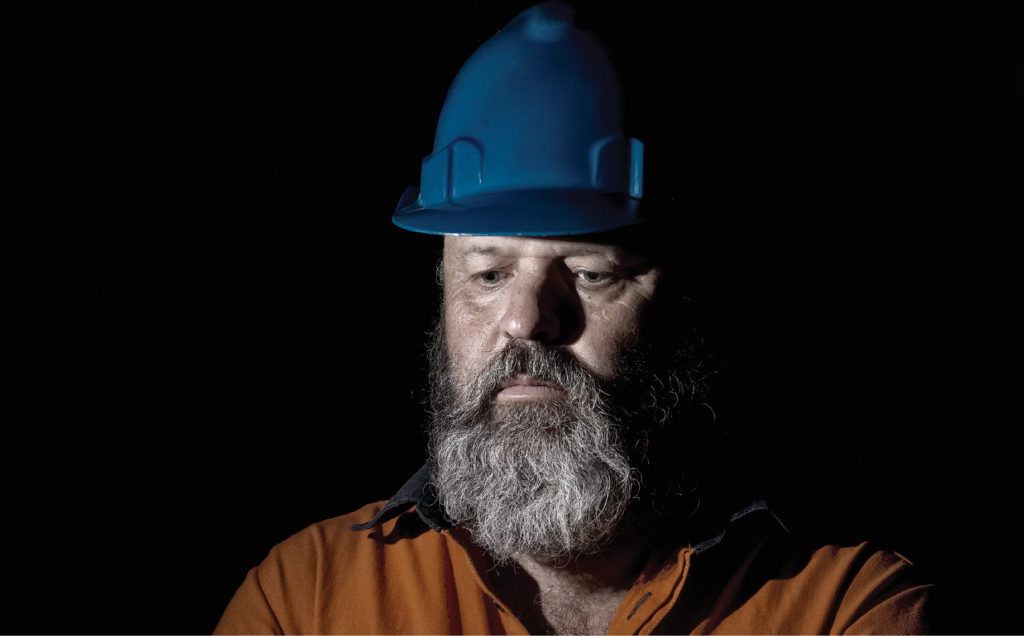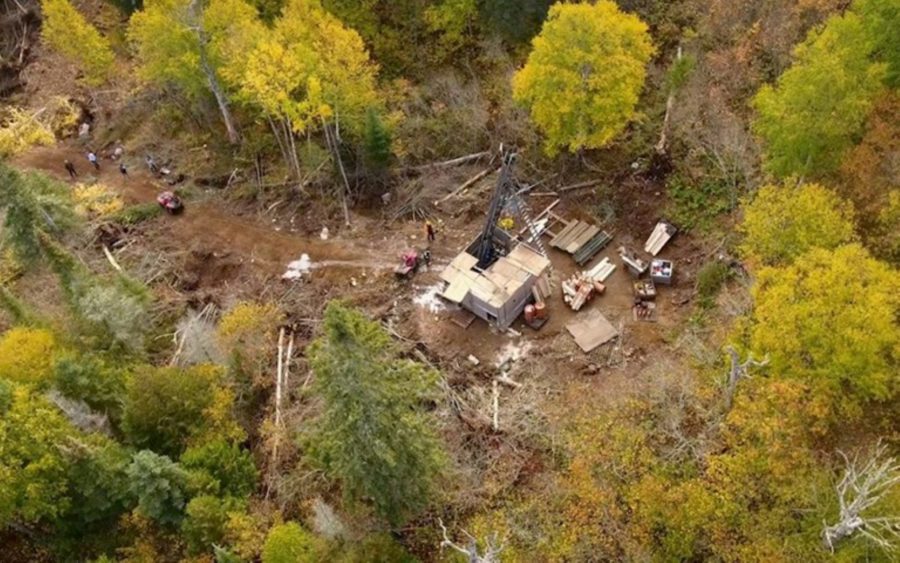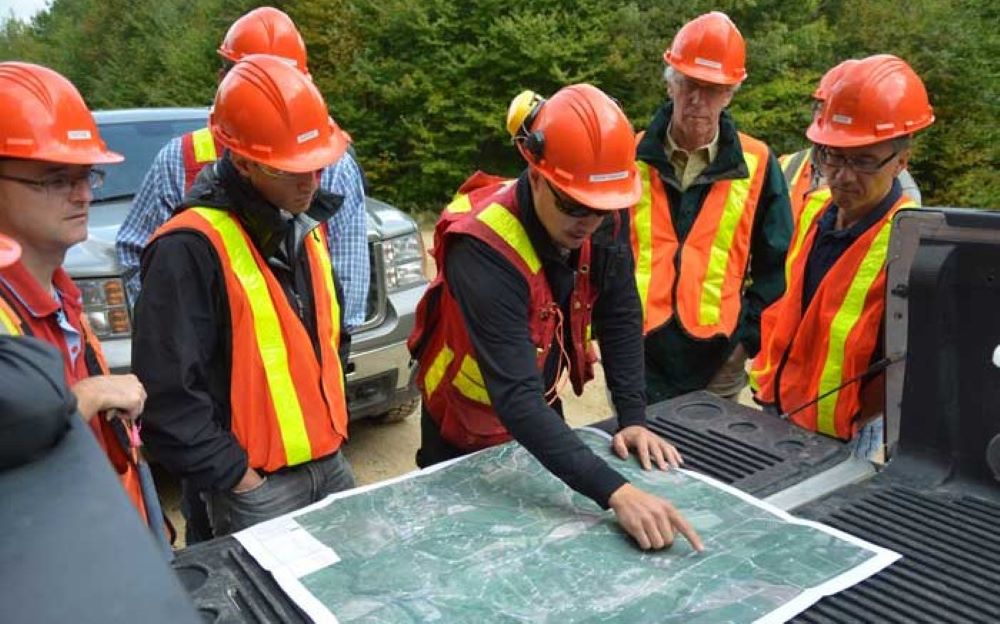The missing imperative: Psychological health & safety in mining

It is no hidden fact that mining can be a dangerous industry. The Canadian Centre for Occupational Health and Safety (CCOHS) reports that Canada’s mining industry employs more than 400,000 workers in mineral extraction, smelting, fabrication and manufacturing. “Although injuries and fatalities have been on the decline, and despite a core emphasis on safety culture, there are still workers who lose their lives or are injured while performing their jobs in mining environments,” reads CCOHS’s Drilling Down on Mine Safety report, which also describes hazards as “an everyday, constant reality” in the sector.
There are a variety of systems in place to try and prevent these accidents, including compulsory training programs, simulation tests, blasting training and licensing, and up-to-date safety legislation and standards. Many companies, though implementing and reiterating their safety protocols, experience a rise in critical safety incidents and fatalities. This rise can be linked to the correlation of physical safety and psychological safety in the workplace.
Safety incidents can have long-lasting impacts on a company’s reputation and investment viability. This is something that Canadian mining companies can’t afford as the competition for skilled workers is fierce, causing a skills gap in the sector. Also, at the forefront of conversations amongst mining companies is the importance of ESG – environmental, social, and governance – which is a formula being widely discussed and used as the baseline for the re-evaluation of safety, ethics, and overall culture within organizations. Now is the time for mining companies to focus on psychological safety, to both improve their reputation and credibility, and to attract and retain skilled workers.
Refinery, the Vancouver-based leadership development firm that I lead, was called in to help a mining organization that was experiencing a marked increase in injuries and incidents at one of its underground mine sites. This increase occurred even though the company had been carrying out routine safety demonstrations and displayed safety protocols on signs and posters around the site. After conducting interviews with front-line workers and supervisors, the underlying issues reveal a disturbing reality. Within large mining organizations, there is often a fear culture imposed on employees by their superiors which promotes production before safety, as employees feel pressured to perform to the superiors’ expectations – no matter what. In this case, miners reported feeling psychologically ‘unsafe,’ and as a result they would not report minor safety incidents to their superiors for fear of being punished.
Respect and meaningful relationships with superiors help to cultivate a successful and safe workplace. This requires supervisors that have both the skills and credentials to carry out the job effectively, and understand how to deal with, engage and lead their team members in a safe and respectful manner. The leaders of this mine site lacked those basic characteristics, putting front-line workers at a higher risk for serious accidents.
Psychological Safety
The focus on psychological safety in mining, particularly at mine sites, has been gaining attention in the industry. Timothy R. Clark, author of The Four Stages of Psyhological Safety, defines psychological safety in the workplace as a condition in which human beings feel (1) included, (2) safe to learn, (3) safe to contribute, and (4) safe to challenge the status quo. When an organization reaches a Level 4 culture of psychological safety, it means that employees feel included and heard, and also that their leaders have established an environment where they are allowed to learn and make mistakes. Without a solid balance of permission and respect, psychological safety cannot exist and that makes way for varying degrees of paternalism or exploitation that can create a dangerous work environment where small mistakes can result in injury or death.
An absence of psychological safety in these environments can be a major contributor to the increased levels of stress, anxiety and depression for mine workers, who, according to a 2019 Mining Mental Health Study, reportedly experience higher rates of psychological distress, compared to workers in other industries.
So, what does a mentally healthy workplace look like? According to the Mineral Council of Australia’s Blueprint for Mental Health and Well-Being: “A mentally healthy workplace creates a positive working environment that builds individual skills and resilience, reduces workplace risks to mental health problems and supports staff with mental health conditions.”
There is a good reason for a renewed focus on psychological safety in mining, as we see the impact of mental health issues hitting the bottom line of mining organizations. The Australian Mine Safety Journal estimated in 2014 that poor mental health will cost the mining industry between $320 million to $400 million per year or around $300,000 to $400,000 for an average mine of 170 staff. Applying that math to a larger mining company that operates several operations globally, one can see instantly how the mental health of employees can hit the organization’s bottom line in a dramatic way.
The impact of safety incidents on an organization’s ESG score can also be significant. In an October 2020 article, Why ESG is Integral to Analysis of Mining Companies, investment management firm T. Rowe Price noted that safety incidents can have long-lasting effects on a mining company’s reputation, credibility, and ultimately, viability as an investment. “That’s because authorities have the power to place a company into state curatorship or even revoke a company’s mining licence in a worst-case scenario,” reads the article. Unfortunately, the impacts above don’t include the hidden costs of increased employee attrition, decreased employment brand quality, under-reported medical issues, and lack of employee engagement, which further impact a company’s viability.
Does your organization have a problem?
Figuring out if your organization has a culture of psychological safety might sound daunting but it’s well worth the effort. Collecting a balanced mix of qualitative and quantitative data to fully understand the situation is vital. There are many ways to go about this, including interviews and surveys of employees and leaders in the organization, observing team meetings (and noting whether there is healthy, open debate, feedback and sharing of ideas), and talking with your contractors and vendors to understand how they are being treated by internal employees. Once you gain a full understanding of where your organization stands regarding psychological safety you can come up with a plan of action to mitigate any issues. Bringing in a third party of professionals that deal with identifying psychological safety issues and developing solutions can make the process easier and more effective by eliminating subjectivity, minimizing bias and most importantly, increasing the level of safety for those invited to provide confidential feedback about the environment they work in.
Refinery’s approach
Refinery designed a three-part strategic intervention program for the specific mining site menioned above, and its employees. This involved working with upper, mid-level and front-line managers of the plant to adapt their behaviours and outlooks to foster a culture of safety. Front-line workers started to take accountability for their relationships with their leaders, and hold them accountable for their behaviours, and those leaders became more open to learning how to deal with the psychological aspect of management. Changing the culture of psychological and physical risk into one of safety takes time and cannot be fixed by providing safety training programs alone. However, after just four months of the program, each member of the upper management team was able to openly identify their weak points that they needed to work on in order to improve as a leader. These small steps become massive leaps when it comes to moving an organization’s culture towards being safer and more sustainable.
Experiential Learning Theory
Creating and sustaining a culture of safety in a mining organization calls for an integrated development approach that combines solid leadership practices and safety practices.
Any organization is ultimately a collection of people, culture, attitudes and behaviours. If your organization prides itself in having a strong safety culture, consider if psychological safety is included as a priority. Making steps towards improving the safety of your organization will allow your company to stand out and give your workers the peace of mind knowing they are comfortable with where they work and who they work for. These issues are important to workers and their families. Having their safety and security not just physically but mentally as your number one priority will make all the difference in the quality of the individuals your organization can attract.
Now is the time for your organization to be actively planning to target psychological safety initiatives at all levels. Building a strategy of development that combines leadership development and safety leadership is a starting point toward a culture of sustainable, physical and psychological safety for all employees.
Susan Eick is CEO of Refinery (www.refineryleadership.com), a global leadership development firm that specializes the mining and resources industries.





Comments